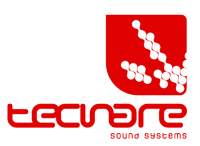Explore the World of Sound
Frequency, Wavelength, and Phase: Essential Principles for Sound Engineers
The world of professional audio is not just about connecting speakers and amplifiers; it’s a science that involves fundamental concepts like frequency, wavelength, and phase. To design efficient sound systems and optimize the acoustics of a space, it’s crucial for engineers to understand how these principles affect sound quality. In this article, we will explore these concepts in detail and their importance in the field of professional audio.
What is Frequency?
Frequency refers to the number of cycles a sound wave completes in one second and is measured in hertz (Hz). Essentially, it determines how high-pitched or low-pitched a sound is. The higher the frequency, the higher the pitch, and the lower the frequency, the deeper the sound.
-Bass: Frequencies ranging from 20 Hz to 200 Hz form low-pitched sounds that provide depth and power in music.
-Midrange: From 200 Hz to 5,000 Hz, these frequencies account for most instruments and human voices.
-Treble: Frequencies above 5,000 Hz add brightness and clarity to sound, like the cymbals of a drum kit.
The range of frequencies that the human ear can perceive spans approximately from 20 Hz to 20,000 Hz, although this capacity tends to decrease with age.
Wavelength: How It Affects Sound Propagation
Wavelength is defined as the distance a wave travels during one complete cycle and is inversely related to frequency:
Wavelenght= Speed of Sound / Frequency
Given that the speed of sound in air is approximately 343 m/s at room temperature (20 °C), a frequency of 1,000 Hz has a wavelength of about 34.3 cm.
Low frequencies have longer wavelengths, allowing them to travel farther and pass through obstacles like walls.
High frequencies have shorter wavelengths, making them more directional and more affected by absorption.
This is critical when designing sound systems, as speaker dispersion and coverage depend on wavelength. For instance, line array systems like the Tecnare CLa21PLUS are designed to optimize the propagation of sound waves along an axis, maximizing coverage in live events.
The Importance of Phase in Audio
Phase describes the position of a wave in its cycle at a given moment and is measured in degrees (°). Two sound waves can be in phase, out of phase, or somewhere in between.
In phase (0°): If two waves of the same frequency and amplitude are in phase, they will add together, resulting in a louder sound.
Out of phase (180°): If two waves are completely out of phase (180°), they will cancel each other out, which can lead to sound loss at certain frequencies. This is known as phase cancellation.
In live sound installations or fixed setups, it is crucial to ensure that speakers and subwoofers are phase-aligned to avoid cancellation issues. Tools like digital signal processors (DSPs) allow for phase adjustments to optimize sound quality.
Practical Applications for Sound Engineers
These principles are essential for professionals working in the installation and tuning of sound systems. Here are some practical ways in which these concepts are applied:
Frequency Adjustment:
During equalization, engineers adjust frequencies to enhance sound clarity and reduce issues like feedback. For example, reducing frequencies between 200-400 Hz can decrease the “boxy” effect in vocals.
Wavelength Control:
In large spaces, it’s important to consider how the wavelengths of low frequencies interact with the environment, potentially causing bass build-ups in certain areas. Using subwoofers with directivity control can mitigate this effect.
Phase Alignment:
Line array systems require careful phase alignment between modules to ensure uniform coverage. Technologies like EASE Focus allow simulations of wave behavior in a space and help adjust speakers to minimize phase issues.
Practical Case Study: Optimizing a Line Array System
Imagine you are setting up a Tecnare CLa21PLUS system for a concert in an auditorium. The goal is to maximize coverage and minimize dead spots. Here’s a step-by-step approach:
*Initial Measurement: Use a spectrum analyzer to identify any phase issues or peaks in the frequency response.
*Phase Adjustment: Use a DSP to align the phase between the speakers and subwoofers.
*Equalization Optimization: Adjust frequencies to reduce feedback and improve sound clarity.
*Final Testing: Conduct a sound check with music and microphones to ensure the system is fully optimized.
Conclusion
Understanding frequency, wavelength, and phase is essential for any sound engineer looking to maximize the quality of an audio system. These principles not only enhance the audience’s experience but also optimize the performance of professional audio equipment.
If you need assistance with the installation or tuning of a sound system in your venue, our team of engineers is available to offer free consultations and acoustic simulations using advanced technologies like EASE Focus. Contact us to take your project to the next level!
Featured Articles
Explore Other Topics
Acoustic Science
Audio Technology
Sound Design
Music Production
Environmental Acoustics
Psychoacoustics
Audio Engineering
Sound History
Tecnare
Loudspeakers Series
E Series
IBZA Series
V Series
ALIS Series
Array Series
SW Series
KT Series
TANIT Series
CS Series
Amplifiers Series
Digital Processors
Accessories
